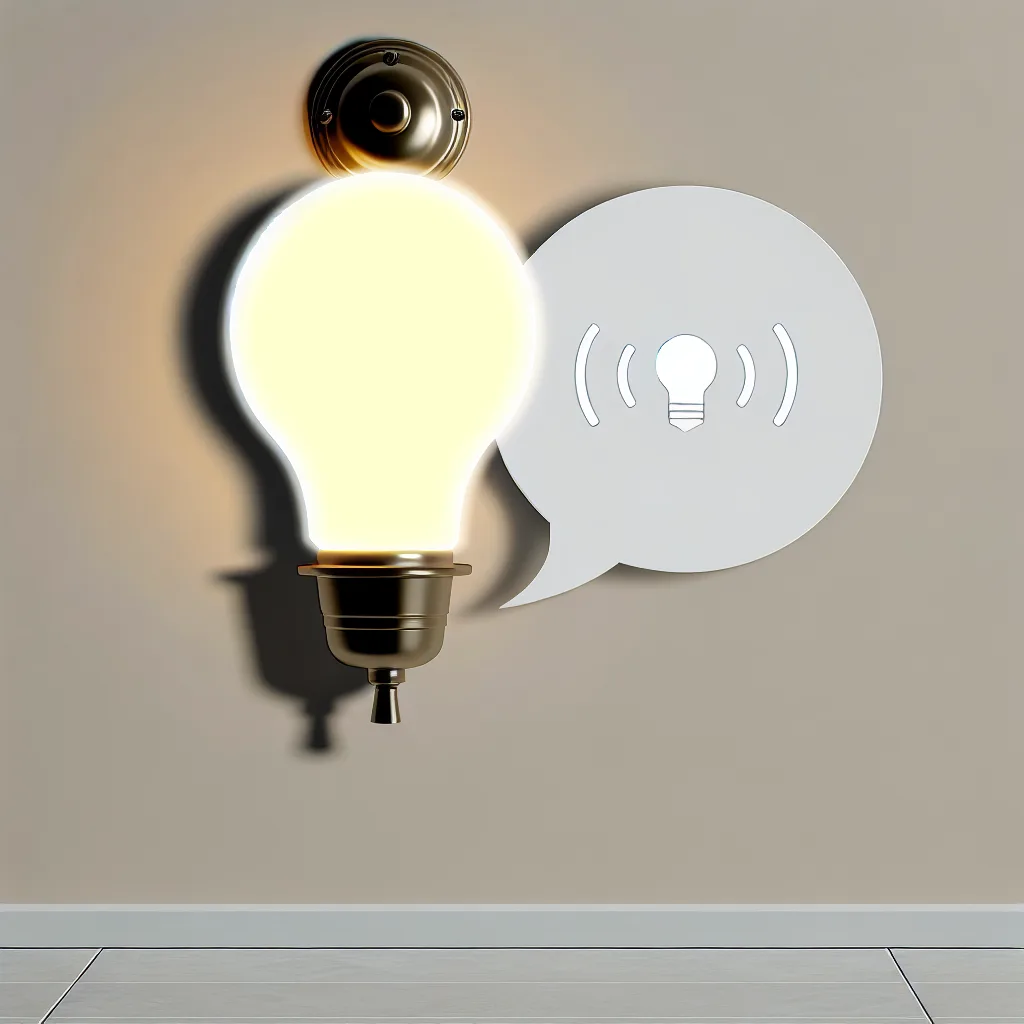A beginner’s guide to adding voice-controlled lights to any room, even without a wall switch.
No Light Switch? No Problem.
Ever stumbled into a dark room, fumbling around for that tiny, awkward switch right on the light fixture itself? It’s a classic feature in older apartments and homes, and let’s be honest, it’s a pain. If this sounds familiar, you’ve probably wondered if there’s a better way. Good news: there is, and you don’t need to be an electrician to fix it. A simple smart light setup is the perfect solution, turning your frustrating fixture into a voice-controlled convenience.
I get it, the world of smart homes can feel intimidating. You hear about hubs, bridges, and complicated wiring, and it’s easy to feel lost. But for this specific problem, the solution is surprisingly simple. You don’t need a smart plug, which only works for things you plug into an outlet. Instead, the magic is all in the light bulb itself.
Your First Smart Light Setup: What You Actually Need
Forget the complex diagrams and technical jargon. To solve the “no wall switch” problem, you only need a couple of things. The goal is to replace your regular bulb with a smart bulb that has its own built-in Wi-Fi connection. This lets you control it from your phone or with your voice, completely bypassing the need to touch the fixture.
Here’s a simple shopping list:
- A Wi-Fi Smart Bulb: These are the key. Brands like Wyze, TP-Link Kasa, and Sengled make fantastic, affordable bulbs that connect directly to your Wi-Fi without needing any extra hardware. You just screw them in like a normal bulb.
- Your Smartphone: You’ll need it to download the bulb’s companion app to get everything set up.
- A Voice Assistant (Optional, but recommended!): If you want to use voice commands like “Hey Google, turn on the bathroom lights,” you’ll need a smart speaker or a phone with Google Assistant or Amazon Alexa.
That’s it. No extra hubs, no wiring, no calling a professional.
Why a Smart Bulb is the Perfect Fix
A standard light fixture with a manual switch is a simple circuit. When you turn its little knob or pull its chain, you’re physically completing the circuit to let power flow to the bulb.
A smart bulb works a bit differently. You leave that physical switch in the “on” position permanently. This means power is always flowing to the bulb, but the bulb itself is in a low-power standby mode. It’s waiting for a signal from your Wi-Fi network. When you say, “Alexa, turn on the light,” your command goes to the internet, then to the bulb, telling it to power on its LED. It’s a beautifully simple and effective workaround.
For those who want to dive a bit deeper into the different types of smart lighting available, a great resource is The Verge’s beginner’s guide to smart lights, which breaks down the pros and cons of different systems.
Putting Your Smart Light Setup Together: A 5-Minute Guide
Ready to make it happen? Here’s how easy it is.
- Screw It In: Take your old bulb out and screw the new smart bulb in its place.
- Power It On (and Leave It On): Turn the physical switch on the light fixture to the “ON” position. This is the most important step! From now on, you’ll pretend this switch doesn’t exist.
- Download the App: Grab your phone and download the app for your bulb’s brand (e.g., the Wyze app, Kasa Smart app).
- Connect to Wi-Fi: Follow the simple on-screen instructions in the app. It will usually involve finding the bulb on your Wi-Fi network and giving it your password. This connects the bulb to the internet.
- Link Your Voice Assistant: Open your Amazon Alexa or Google Home app. Go to the “Devices” section and look for an option to add a new device or skill. Search for your bulb’s brand, link your accounts, and you’re done.
Now for the fun part. Say the magic words: “Hey Google, turn on the bathroom light.” And just like that, you have light. No more fumbling in the dark.
If you decide you want to build out a more robust system later, you can explore options like the Philips Hue ecosystem, which uses a central hub to control many lights and accessories with incredible reliability. But for starting with a single, switch-less fixture, a simple Wi-Fi bulb is all you need.
So, don’t let quirky old wiring stop you from enjoying a little modern convenience. This easy smart light setup is a perfect weekend project that solves a real, everyday annoyance.
